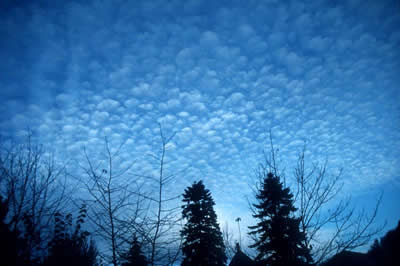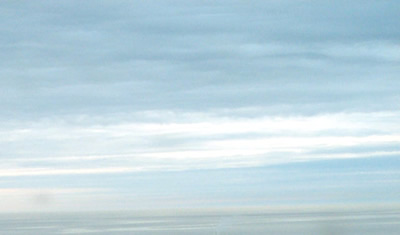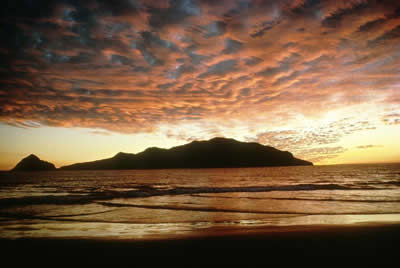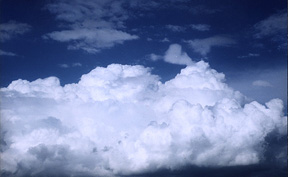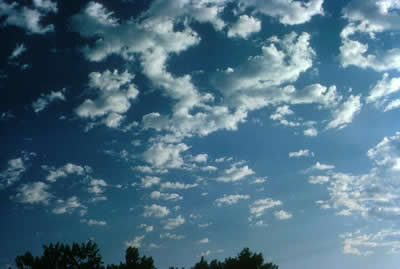Sky Conditions
"Tomorrow, expect scattered clouds in the morning with an overcast sky in the afternoon and a 60% chance of rain." Huh? What does a weather forecaster mean when he/she makes that kind of statement?
Well, that statement concerns something meteorologists call "sky conditions." Sky conditions consist of two main areas: cloud cover and probability of precipitation.
Probability of precipitation is the likelihood that it will rain, snow, sleet, or hail. Meteorologists use several instruments and scientific calculations to figure out this probability.
Cloud cover is based on observations more than calculations. Cloud cover is the amount of sky that is covered by clouds. The following table describes the different levels of cloud cover and the meanings.
| Cloud Cover Term | Meaning |
|---|---|
| Clear | 10% of the sky is covered by clouds |
| Scattered/Partly Cloudy | 10%-50% of the sky is covered by clouds |
| Broken/Mostly Cloudy | 50%-90% of the sky is covered by clouds |
| Overcast | >90% of the sky is covered by clouds |
| Obscured | sky is covered by fog, smoke, blowing snow, or smog |
Sometimes, a meteorologist refers to the cloud deck. Cloud deck is the height from the Earth's surface to the bottom (base) of the cloud. There can be several cloud decks, just like the decks of a cruise ship. Each cloud deck may represent a type of cloud, such as High Clouds, Middle Clouds, or Low Clouds. If the sky is broken or overcast, then you can usually only see the lowest cloud deck.
 Try an Experiment
Try an Experiment






